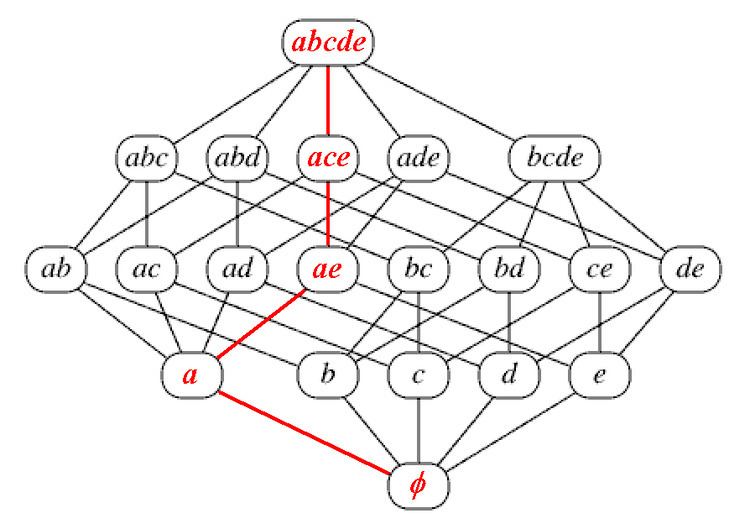 | ||
In (polyhedral) geometry, a flag is a sequence of faces of a polytope, each contained in the next, with just one face from each dimension.
More formally, a flag ψ of an n-polytope is a set {F−1, F0, ..., Fn} such that Fi ≤ Fi+1 (−1 ≤ i ≤ n − 1) and there is precisely one Fi in ψ for each i, (−1 ≤ i ≤ n). Since, however, the minimal face F−1 and the maximal face Fn must be in every flag, they are often omitted from the list of faces, as a shorthand. These latter two are called improper faces.
For example, a flag of a polyhedron comprises one vertex, one edge incident to that vertex, and one polygonal face incident to both, plus the two improper faces. A flag of a polyhedron is sometimes called a "dart".
A polytope may be regarded as regular if, and only if, its symmetry group is transitive on its flags. This definition excludes chiral polytopes.
Incidence geometry
In the more abstract setting of incidence geometry, which is a set having a symmetric and reflexive relation called incidence defined on its elements, a flag is a set of elements that are mutually incident. This level of abstraction generalizes both the polyhedral concept given above as well as the related flag concept from linear algebra.
A flag is maximal if it is not contained in a larger flag. When all maximal flags of an incidence geometry have the same size, this common value is the rank of the geometry.
